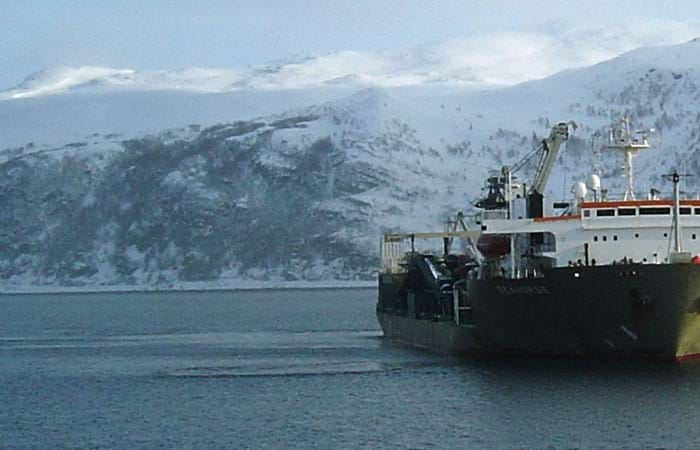The Snøhvit development comprises three fields – Snøhvit, Albatross and Askeladd. These are located in the Barents Sea, about 140 kilometers north-west of Hammerfest in northern Norway. All primarily contain natural gas with small quantities of condensate. Snøhvit is the first major development on the Norwegian continental shelf without surface installations.
Instead, subsea production facilities stand on the seabed in water depths of 250 to 345 meters. The gas is transported through a 143 kilometers long pipeline to the land-based processing facility for LNG at Melkøya in the north of Norway. Besides the main line, a carbon dioxide injection pipeline, two chemical lines and an umbilical connect the field with Melkøya. The pipeline route is characterized by an uneven seabed the first 20 km from shore and pockmarks and iceberg plough marks at the field. The soil varies from hard clay closest to shore, sand in the mid section and soft clay at the field. The maximum water depth is approximately 345 meters at the field and 445 meters along the pipeline route. Boskalis Offshore was awarded a contract for subsea rock placement, which was required during the pre- and post-installation phases.

